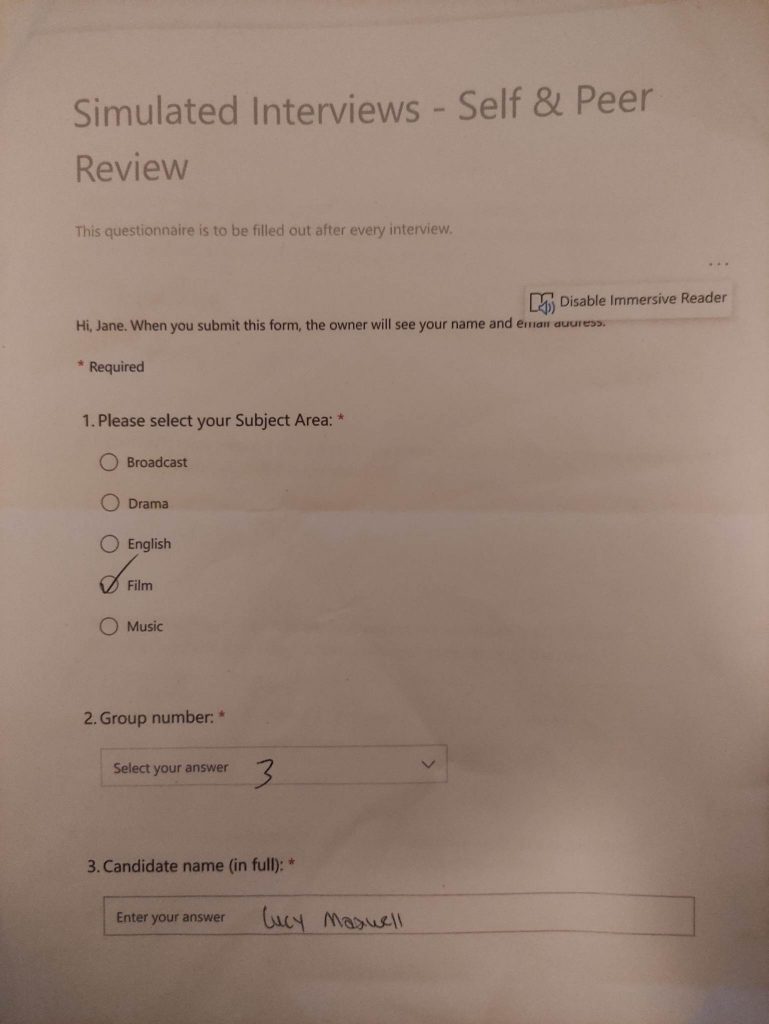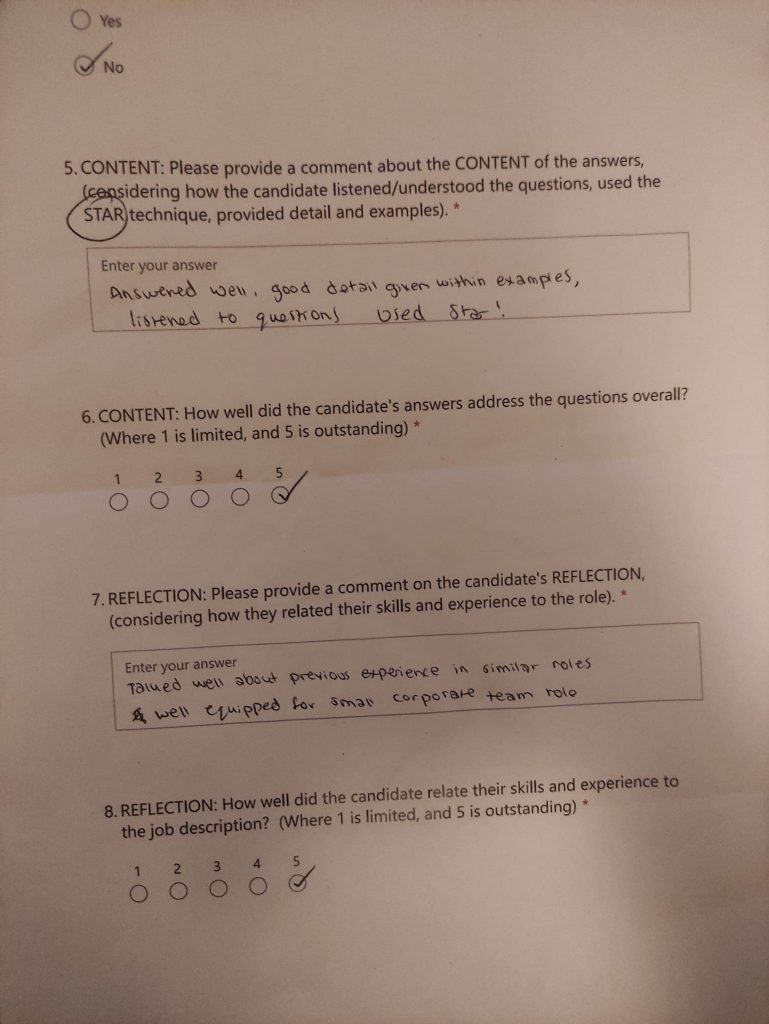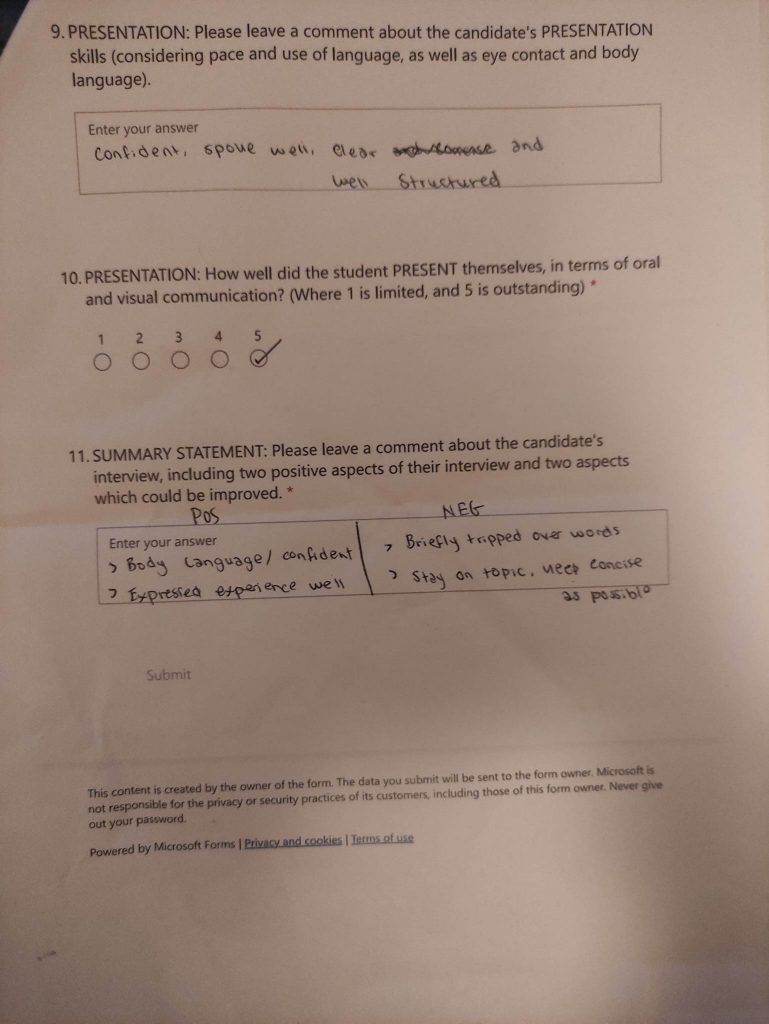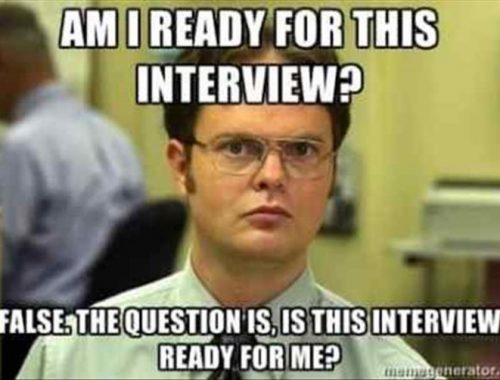Stressed: The Blog Post
I had been dreading my simulated interview since I heard about it. In the end, and as somewhat expected, the lead-up turned out to be more stress-inducing than the interview itself. Though the interview was a blur, the value of it was in the preparation and the feedback. I will be using Gibbs’ Reflective Model (1988, p.49) to organise my reflection. Gibbs’ Reflective Model lends itself to evaluating such an experience as it would be easy to have my reflection dominated by how I was feeling. This is particularly true as I was very anxious. Gibbs’ Model, however, allows me to reflect on my feelings as well as the facts of the situation, aided by my peer review sheet. In addition, I have extended Gibbs’ Reflective Model to consider how I have used my learning from the simulated interview in a real interview I have since given.

Description:
On the day of the interview, I came into the room where it would take place. I joined my group of five and we discussed how we would approach choosing and asking questions. All but one of us were “applying” for editing jobs. We decided that we would change most of the questions for each interview, to make it as realistic as possible. I was the last to be interviewed. When my turn came, I left the room for five minutes whilst the rest of the group discussed what questions I would be asked. During this time, a fellow interviewee and I discussed how we were feeling. She was very calm, I was not. The success of my attempts to prevent her from contracting my nerves is up for debate. After the 5 minutes were complete, I reentered and the interview began. I don’t remember a whole lot of the actual interview, but it lasted around ten minutes. When it was over, I left the room again so my group could fill out the peer review sheet.
Feelings:
In the days leading up to the interview, I knew that I would be very anxious right before and during it. This turned out to be true, and it’s likely that telling myself I would be anxious beforehand actually made me more so. Being the last person interviewed had a strange effect on how I was feeling. In one sense, it made me more anxious, as the suspense was building whilst everyone else was being interviewed. This was especially true as the stress from others was contagious. However, being interviewed last also somewhat made me less stressed. This is because I became more comfortable with my group. Though my increased and decreased stress was due to factors that would not be in effect in an actual interview, the presence of both means that the net effect was negligible. This meant that the simulated interview still felt reminiscent of a real interview. During the interview, I felt particularly worried that I would be completely unable to answer a question and go silent. My dominant feeling was panic.
Evaluation:
The peer review sheet helped me to establish where my interview went well and where it could have been better, despite the experience being a blur to me personally. On the positive side, I received five out of five in all three categories. I also noticed that once I got going, I was able to slow down and think about the structure of my answers, rather than just blurting out the first thing that came to mind to avoid drawing a blank. My peer review sheet also complimented the detail of my answers. However, there were a number of things I could have done better. I occasionally tripped over words and went off topic. At one point, I reached the end of what I was saying and realised I had forgotten what question I was answering. This meant that I had to round it off in a general way rather than relating the experience I had just described back to the question asked.



Conclusion:
Although I was reviewed well by the interview panel, I think that feeling anxious really limited me. it meant that my answers came out muddled as I did not have a clear head to consider my answers properly. One technique that I found useful was using STAR (Boogaard, 2018) to structure my answers. This meant that even though my mind was muddled, I had something to cling onto when I felt myself getting lost. On reflection, I can see where I could have used STAR throughout other areas of my interview to provide further detail and a wider range of examples. I also learned that advance preparation really served me well.


Action plan:
There are some things I would repeat in the future. Planning in advance helped me to answer questions where I would otherwise have frozen. All in all, I think the experience made me more comfortable in an interview situation. Although it was less formal than a real interview, I think that it provided a good opportunity to practice answering interview questions with less real pressure. I also think that, ultimately, feeling anxious is not something that I can choose to switch off. I think that the key for me is to become more confident in my abilities and to be okay with being nervous. In future I will remember that it is not the be all and end all of the situation, and that the fear of coming across as anxious is the most anxiety-inducing factor. I now know that I am able to deliver a good interview despite being anxious.
Real-life Application:
Since partaking in the simulated interview experience, I have undergone a real interview. The most notable part of this is that I was much less anxious in advance of the real interview than I was the simulated interview. In the lead-up to the real thing, instead of beating myself up for being a little anxious, I let myself feel that way and reminded myself that I could give a strong interview despite my nerves. The simulated interview was proof of this. Being calmer meant that I could slow down when answering questions and focus on providing the most relevant examples, using the STAR technique.
Bibliography:
Boogaard, K. (2018). The STAR Method: the Secret to Acing Your next Job Interview. [online] Themuse.com. Available at: https://www.themuse.com/advice/star-interview-method.
Gibbs, G. (1988). Learning by Doing, a Guide to Teaching and Learning Methods.
[online] Oxford Brookes University. Oxford Brookes University. Available at:
https://thoughtsmostlyaboutlearning.files.wordpress.com/2015/12/learning-by-doinggraham-gibbs.pdf.
D-DAY
You May Also Like

Job Interviews: Selling Yourself For A Pay Cheque
24 February 2023
Working with a Production House
30 November 2022
